

Honeybees are very industrious creatures. They work tirelessly to gather the nectar from a plethora of flowers, which they then convert into honey and store in their hives for safekeeping through the winter months when it may be scarce. To produce this bountiful supply, there has to be an ample amount of flowering plants available at any given time during what is called “nectar flow” or “honey flow.”
This period usually lasts anywhere from one week up until 3 months, when bees will have an opportunity to collect excess nectar for their colony. They will collect enough nectar that will later be converted into honey for the colony to survive the winter.
Honeybees are very industrious creatures. They work tirelessly to gather the nectar from a plethora of flowers, which they then convert into honey and store in their hives for safekeeping through the winter months when it may be scarce. To produce this bountiful supply, there has to be an ample amount of flowering plants available at any given time during what is called “nectar flow” or “honey flow.”
This period usually lasts anywhere from one week up until 3 months, when bees will have an opportunity to collect excess nectar for their colony. They will collect enough nectar that will later be converted into honey for the colony to survive the winter.
A nectar flow is the same as a honey flow. Beekeepers use both terms, but they describe the same thing.
Throughout the year, various flowers will bloom, providing different amounts of nectar for pollinators. . The amount of nectar produced in nature changes based on the time of the year, weather, and natural pattern of plant growth. The nectar flow is not consistent in strength from year to year, with some years being greater than others.
There is a nectar flower when a significant amount of nectar is produced. On the other hand, a nectar dearth is when nature is not producing much nectar at all. It can be charted to the exact day it starts and stops using a hive scale.
A nectar flow is the same as a honey flow. Beekeepers use both terms, but they describe the same thing.
Throughout the year, various flowers will bloom, providing different amounts of nectar for pollinators. . The amount of nectar produced in nature changes based on the time of the year, weather, and natural pattern of plant growth. The nectar flow is not consistent in strength from year to year, with some years being greater than others.
There is a nectar flower when a significant amount of nectar is produced. On the other hand, a nectar dearth is when nature is not producing much nectar at all. It can be charted to the exact day it starts and stops using a hive scale.
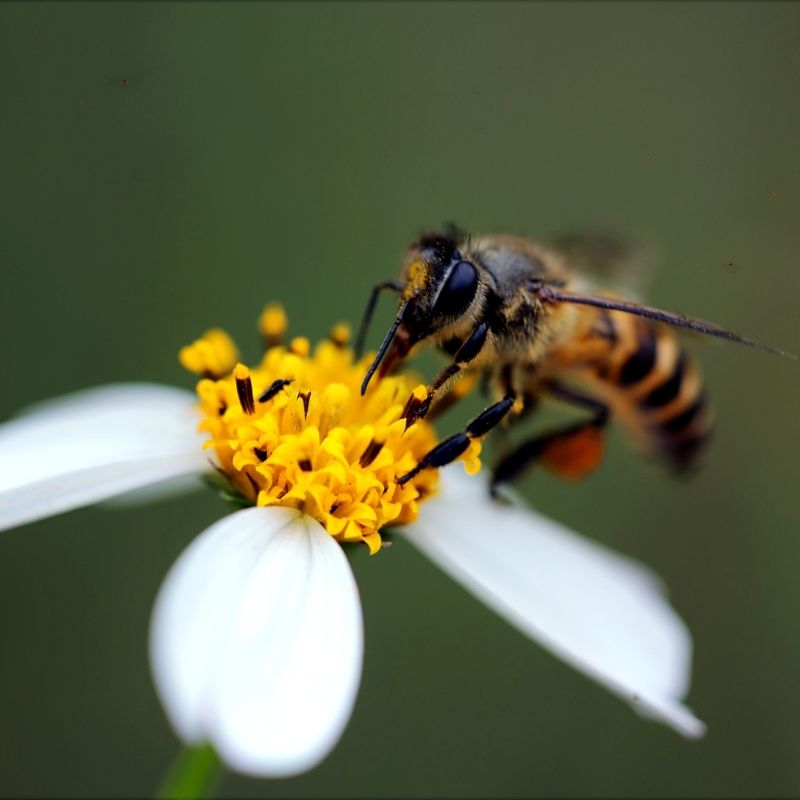
When Does A Honey Flow Start?
Nectar flows are unique to each region, and beekeepers can plan for them yearly. They don’t happen on the same day each year. However, they usually start and end around the same time each year.
For example, in Alabama, the nectar flow starts around early March and ends in mid-June. Alabama is a long state, and the nectar flow can start and stop at different times based on which part of Alabama the flowers are in.
Since the start and end date vary each year, the weather also influences when this is going to happen. All these factors determine the intensity of the nectar flow. The weather pattern has the greatest influence on the honey flow.

When Does A Honey Flow Start?
Nectar flows are unique to each region, and beekeepers can plan for them yearly. They don’t happen on the same day each year. However, they usually start and end around the same time each year.
For example, in Alabama, the nectar flow starts around early March and ends in mid-June. Alabama is a long state, and the nectar flow can start and stop at different times based on which part of Alabama the flowers are in.
Since the start and end date vary each year, the weather also influences when this is going to happen. All these factors determine the intensity of the nectar flow. The weather pattern has the greatest influence on the honey flow.
pattern has the greatest influence on the honey flow.
A very good nectar flow happens when there is enough rain to keep flowers blooming. Not too much rain, though, as this washes nectar from the flowers or keeps bees from flying.
A poor nectar flow will happen when there is too much rain or when there is not enough rain. When there isn’t enough rain and days get too hot too quickly, one of the first things plants will do to survive the heat stops producing nectar.
The same goes for areas that get freezing weather. An early freeze during the fall or a late freeze during the spring will adversely affect the start and the end of nectar flows.
pattern has the greatest influence on the honey flow.
A very good nectar flow happens when there is enough rain to keep flowers blooming. Not too much rain, though, as this washes nectar from the flowers or keeps bees from flying.
A poor nectar flow will happen when there is too much rain or when there is not enough rain. When there isn’t enough rain and days get too hot too quickly, one of the first things plants will do to survive the heat stops producing nectar.
The same goes for areas that get freezing weather. An early freeze during the fall or a late freeze during the spring will adversely affect the start and the end of nectar flows.
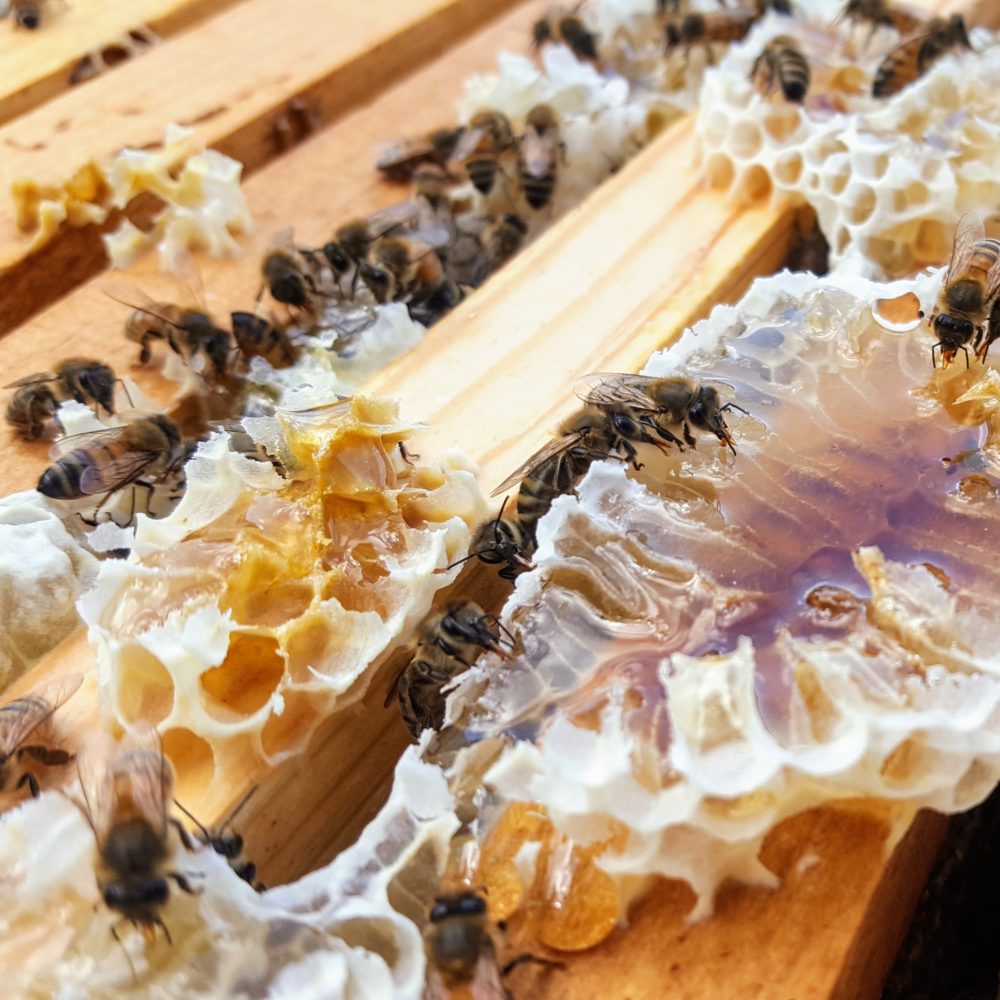
Signs Of A Nectar Flow
There are a few signs that a nectar flow is happening. Some are easier to see than others. There are two easy ways to identify when a nectar flow has started.
One way to know when a nectar flow has started is beekeepers will see a very soft, snow-white colored comb inside the hive. You will often see this in the space between the top box and the inner cover or between the frames in separate boxes. It almost looks like white frosting on the tops of frames.
Another great way to tell if a nectar flow has started is with a hive scale. There are several different types of hive scales. These range from a platform-type scale to a simple luggage-type scale.

Signs Of A Nectar Flow
There are a few signs that a nectar flow is happening. Some are easier to see than others. There are two easy ways to identify when a nectar flow has started.
One way to know when a nectar flow has started is beekeepers will see a very soft, snow-white colored comb inside the hive. You will often see this in the space between the top box and the inner cover or between the frames in separate boxes. It almost looks like white frosting on the tops of frames.
Another great way to tell if a nectar flow has started is with a hive scale. There are several different types of hive scales. These range from a platform-type scale to a simple luggage-type scale.
The platform types of hive scales are the easiest to handle. They work by measuring the weight of the entire hive and comparing it to the previous day. It is very common for the weight of the entire hive to increase by 10 pounds or more in a single day during a nectar flow.
The platform types of hive scales are the easiest to handle. They work by measuring the weight of the entire hive and comparing it to the previous day. It is very common for the weight of the entire hive to increase by 10 pounds or more in a single day during a nectar flow.
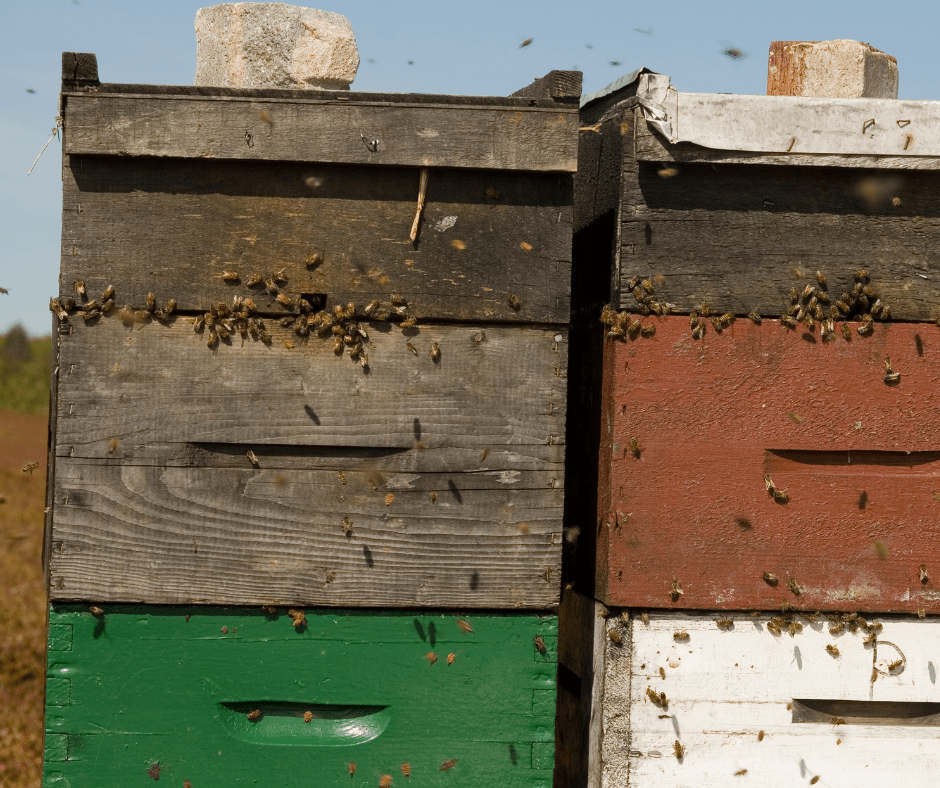
What Should Beekeepers Do During A Nectar Flow?
The nectar flow is an exciting time of the year for beekeepers (and their bees). This is the the time when bees will make the vast majority of their honey, so because of this, the beekeeper needs to be ready for it.
For the first-year beekeeper, this is the time of the year when bees will build much of their comb and store the honey the colony would need to survive the winter. The bees will need to store enough of their honey first before a beekeeper can take the excess. This is true of all beekeepers, but it is more important to leave plenty of honey for the bees during their first year.

What Should Beekeepers Do During A Nectar Flow?
The nectar flow is an exciting time of the year for beekeepers (and their bees). This is the the time when bees will make the vast majority of their honey, so because of this, the beekeeper needs to be ready for it.
For the first-year beekeeper, this is the time of the year when bees will build much of their comb and store the honey the colony would need to survive the winter. The bees will need to store enough of their honey first before a beekeeper can take the excess. This is true of all beekeepers, but it is more important to leave plenty of honey for the bees during their first year.
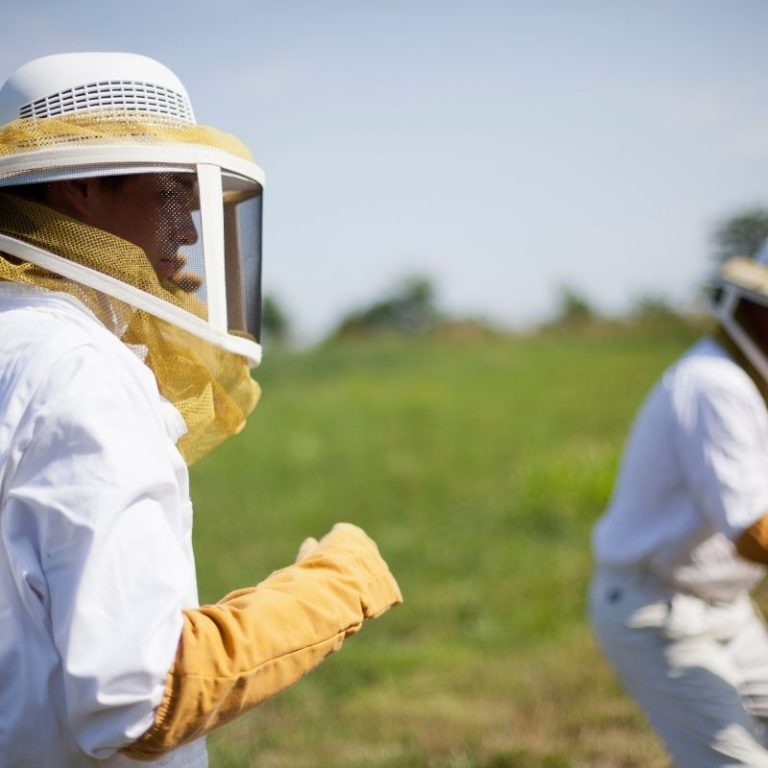
When In Doubt, Ask For Help
A great tip for beekeepers is to ask more experienced beekeepers in your area when the major nectar flow starts and stops. The start and end date will change each year, but it will give you an idea of what to expect. In most of the United States, There will be 2 nectar flows, one in the spring and another in the fall. In some areas, they are equally strong, but the spring flow is often the greatest of the two.
Local beekeeping clubs and Facebook groups are great ways to determine when a nectar flow will start and stop. Beekeeping is very local, so knowing how bees respond to your local environment will help you to become a better beekeeper.
It is a good practice to add honey boxes to your hives 2 weeks before the start of the expected date of the nectar flow. Doing this will cover you if the nectar flow starts early. It will also prevent swarming early in the spring.

When In Doubt, Ask For Help
A great tip for beekeepers is to ask more experienced beekeepers in your area when the major nectar flow starts and stops. The start and end date will change each year, but it will give you an idea of what to expect. In most of the United States, There will be 2 nectar flows, one in the spring and another in the fall. In some areas, they are equally strong, but the spring flow is often the greatest of the two.
Local beekeeping clubs and Facebook groups are great ways to determine when a nectar flow will start and stop. Beekeeping is very local, so knowing how bees respond to your local environment will help you to become a better beekeeper.
It is a good practice to add honey boxes to your hives 2 weeks before the start of the expected date of the nectar flow. Doing this will cover you if the nectar flow starts early. It will also prevent swarming early in the spring.
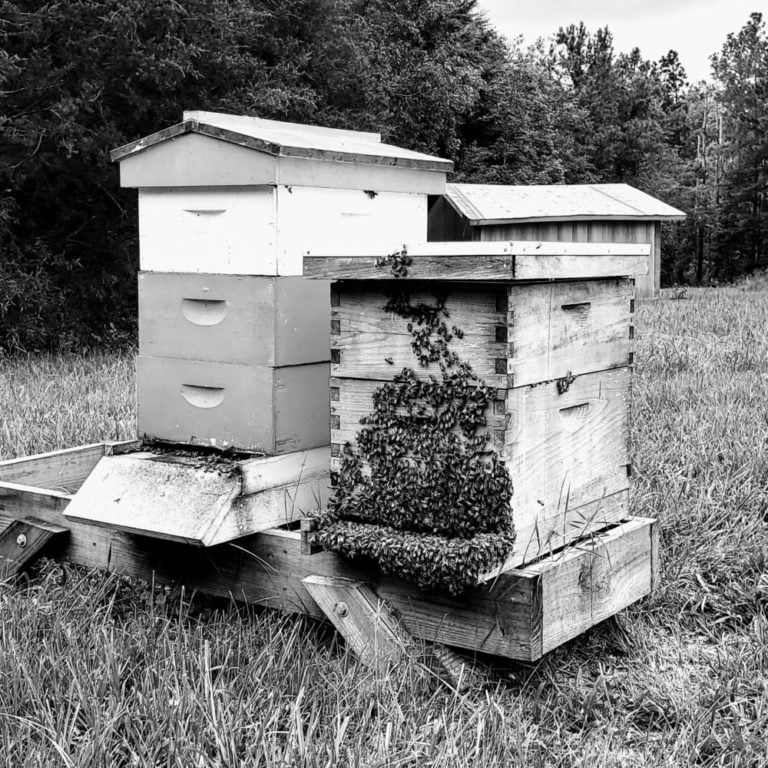
What Is A Nectar Dearth?
The opposite of the nectar flow is the nectar dearth. The nectar dearth is when the nectar flow abruptly stops and the bees enter a period where there is little to no nectar available in the environment. These happen every year and the bees show an obvious change in how they act during a nectar dearth.
Read more about what a nectar dearth is.
During a nectar dearth, bees will often be more likely to sting, more likely to steal honey from other hives and will commonly be seen on the outside of the hive. Often when a nectar dearth is “on”, you will see an activity called bearding which is when a large group of bees will be on the outside of the hive during the hive.

What Is A Nectar Dearth?
The opposite of the nectar flow is the nectar dearth. The nectar dearth is when the nectar flow abruptly stops and the bees enter a period where there is little to no nectar available in the environment. These happen every year and the bees show an obvious change in how they act during a nectar dearth.
Read more about what a nectar dearth is.
During a nectar dearth, bees will often be more likely to sting, more likely to steal honey from other hives and will commonly be seen on the outside of the hive. Often when a nectar dearth is “on”, you will see an activity called bearding which is when a large group of bees will be on the outside of the hive during the hive.



